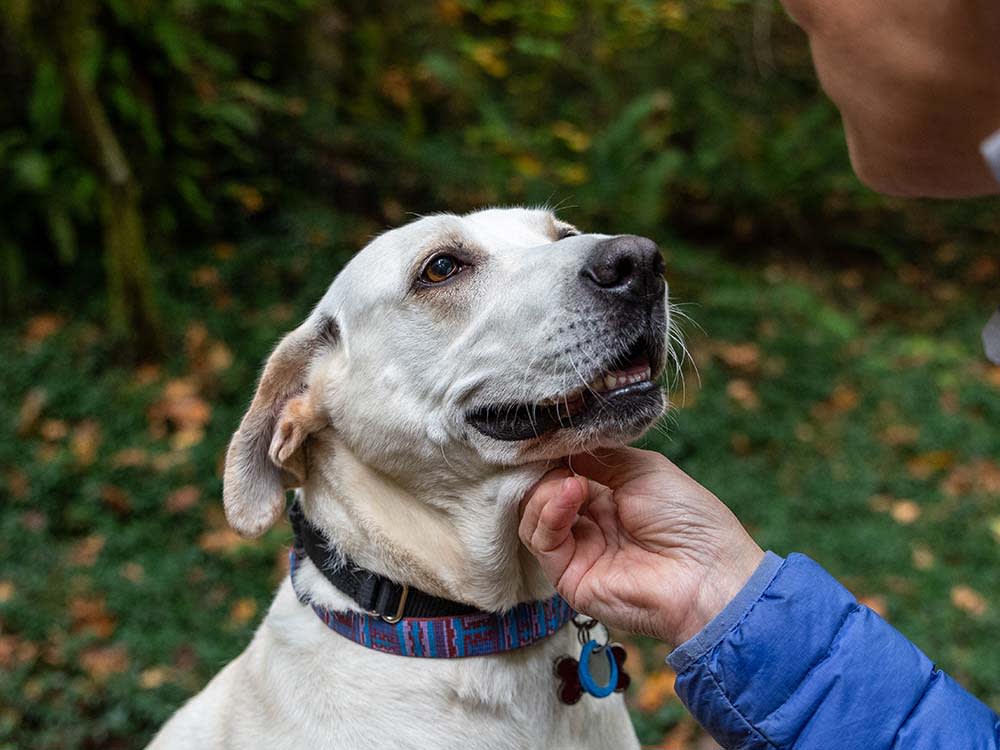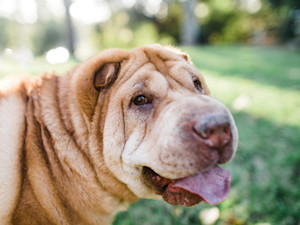Can Dogs Get Breast Cancer?
Sadly, yes — one in four dogs will develop mammary tumors — but there's an easy way to prevent them.

share article

Your pet wants you to read our newsletter. (Then give them a treat.)
You've heard of breast cancer in humans, but did you know that dogs can get it, too? Breast (mammary) cancer in dogs is common — in fact, it’s even more prevalent than in humans. The good news is, the disease can be treated successfully if caught early.
According to veterinarian Dr. Race Foster, the most common type of tumor in female dogs is the mammary tumor — especially in unspayed dogs between ages five and 10. One in fouropens in a new tab unspayed dogs is affected by breast cancer and approximately 50% are malignantopens in a new tab. Some male dogs also develop breast cancer and sadly, their prognosis typically isn’t good, as the cancer is usually very aggressive. Keep reading to learn everything you need to know about breast cancer in dogs.
Signs of Breast Cancer in Dogs
Similar to human breast cancer, mammary tumors in dogs can range in size. Breast tumors in dogs often grow quickly with an irregular shape. They can also cause bleedingopens in a new tab and ulceration. Even if your dog has a tumor that doesn’t exhibit these signs, that does not mean they’re cancer-free. Small tumors that have been present for a while can suddenly grow aggressively. As with most other types of cancer, once malignant tumors in dogs start to grow, the cancerous cells can spread to other parts of the body.
Symptoms to look for are:
Growing lumps opens in a new tabor sores that don’t heal
Drastic changes in a dog’s appetite or weight
Offensive odors
Bleeding or discharge from any opening in the body
Difficulty chewing or swallowing
Unwillingness to exercise
Persistent lameness or stiffness
Difficulty breathing, urinating, or defecating
If you find a lump on your dog, do not wait to go to the veterinarian. It’s always best to play it safe and have them examined by a professional. Even though half of all mammary tumors in dogs are benign, there’s no point in playing guessing games when it comes to your dog’s health.
Treatment for Breast Cancer in Dogs
A biopsy will determine the type of tumor your dog is dealing with. It will also determine the size of the tumor, whether the tumor has spread, and its history of rapid growth, which will narrow down treatment options.
Treatment of a malignant tumor usually involves surgery. Similar to breast cancer in humans, dogs will either have just the tumor removed or the entire mammary tissue along with lymph nodes. Dogs’ mammary glands are different from humans’ in that they’re outside the muscle, so surgery is not as invasive. According to Dr. Foster, chemotherapy and radiation in dogs are not as successful as they are in humans.
Preventing Breast Cancer in Dogs
The best way to prevent breast cancer in female dogs is to spay them before they go into heat for the first time (just another benefit of spaying). By doing this, you're practically eliminating the chances of your dog developing mammary cancer.
“Approximately 50% of malignant mammary tumors in dogs have receptors for either estrogen or progesterone,” explains Dr. Wendy Brooks, DVM, DABVP. “Having these female hormones promotes the growth of these tumors. This means that spaying is important, even if a tumor has already developed. In one study, female dogs spayed at the time of their tumor removal (or in the two years prior to the tumor removal) lived 45% longer than those who remained unspayed.”
Dietopens in a new tab is also a factor in preventing breast cancer. Dogs fed a fatty diet or who are overweight have an increased risk of developing the disease.
Bobbi Leder
Bobbi Leder is a freelance writer and published author.

